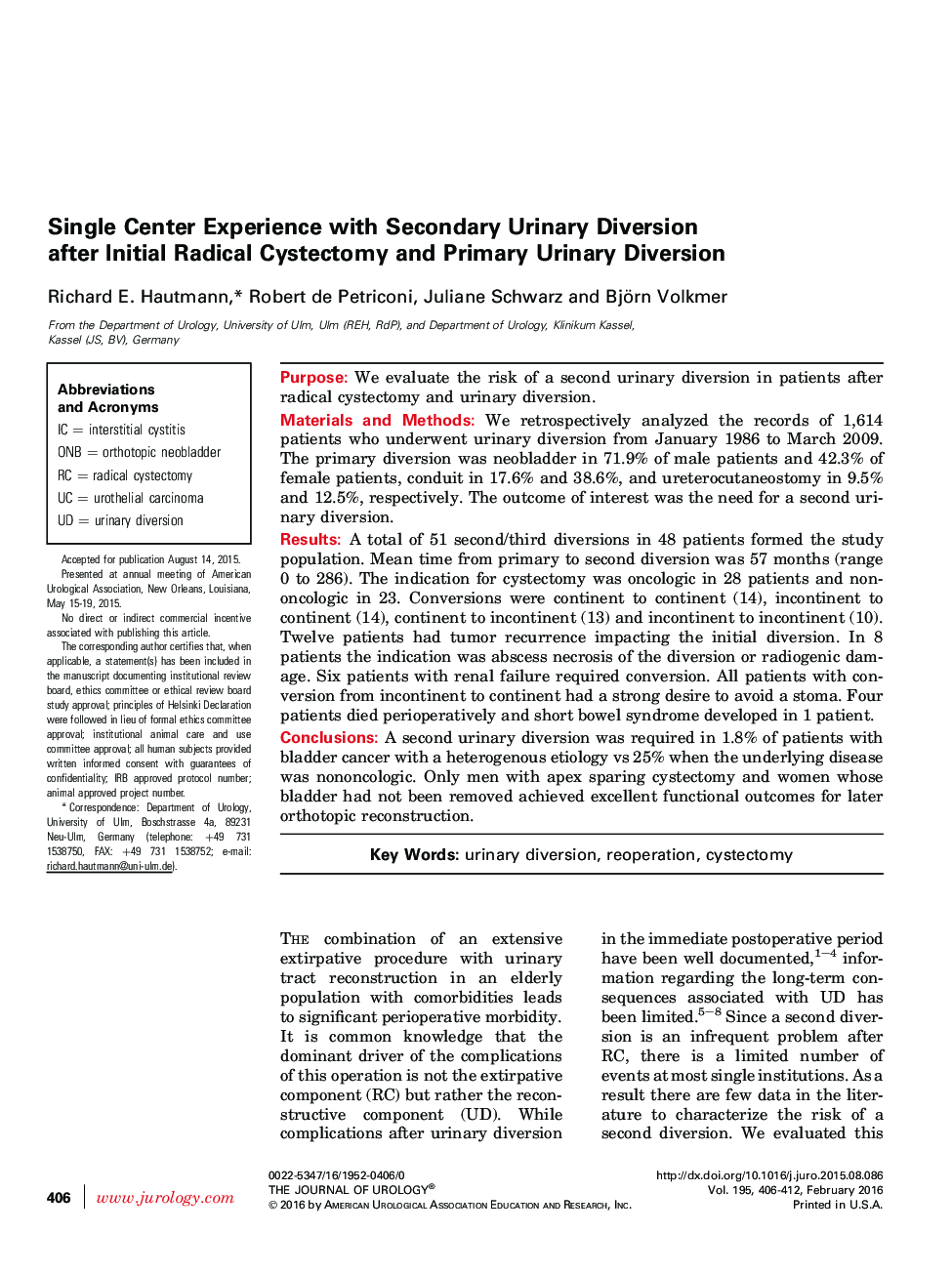| Article ID | Journal | Published Year | Pages | File Type |
|---|---|---|---|---|
| 3858352 | The Journal of Urology | 2016 | 7 Pages |
PurposeWe evaluate the risk of a second urinary diversion in patients after radical cystectomy and urinary diversion.Materials and MethodsWe retrospectively analyzed the records of 1,614 patients who underwent urinary diversion from January 1986 to March 2009. The primary diversion was neobladder in 71.9% of male patients and 42.3% of female patients, conduit in 17.6% and 38.6%, and ureterocutaneostomy in 9.5% and 12.5%, respectively. The outcome of interest was the need for a second urinary diversion.ResultsA total of 51 second/third diversions in 48 patients formed the study population. Mean time from primary to second diversion was 57 months (range 0 to 286). The indication for cystectomy was oncologic in 28 patients and nononcologic in 23. Conversions were continent to continent (14), incontinent to continent (14), continent to incontinent (13) and incontinent to incontinent (10). Twelve patients had tumor recurrence impacting the initial diversion. In 8 patients the indication was abscess necrosis of the diversion or radiogenic damage. Six patients with renal failure required conversion. All patients with conversion from incontinent to continent had a strong desire to avoid a stoma. Four patients died perioperatively and short bowel syndrome developed in 1 patient.ConclusionsA second urinary diversion was required in 1.8% of patients with bladder cancer with a heterogenous etiology vs 25% when the underlying disease was nononcologic. Only men with apex sparing cystectomy and women whose bladder had not been removed achieved excellent functional outcomes for later orthotopic reconstruction.
